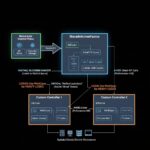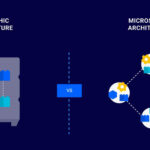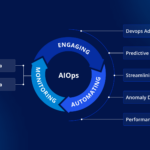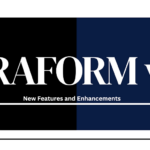
As the demand for rapid software delivery continues to rise, organizations are increasingly adopting DevOps practices to keep up with innovation cycles. However, speed without security can become a major liability. Traditional security approaches often lag behind modern development cycles, introducing bottlenecks and leaving vulnerabilities unaddressed until it’s too late. This is where DevSecOps — and more importantly, automated DevSecOps — comes into play. By weaving security into every step of the DevOps pipeline and automating critical security tasks, businesses can achieve faster, more secure, and resilient software delivery.
🔄 What is Automated DevSecOps?
Automated DevSecOps is the practice of integrating security measures directly into the DevOps pipeline using automation tools and practices. Rather than treating security as a separate or final phase in the software development lifecycle (SDLC), DevSecOps embeds it from the very beginning. Automation ensures that security checks such as vulnerability scanning, code analysis, and compliance validation are executed continuously and consistently, without human intervention slowing things down.
✅ Enhancing Consistency and Reliability
One of the core advantages of automation is consistency. Manual security checks can vary depending on who performs them and when, leading to inconsistent outcomes. Automated DevSecOps eliminates this variability. Whether it’s scanning for vulnerabilities in code dependencies, checking for configuration issues in infrastructure, or verifying container image security, automation ensures these checks happen reliably and repetitively at every stage of the pipeline.
💡 Shifting Left with Code-Level Security
A key principle of DevSecOps is the idea of “shifting left” — bringing security earlier into the development lifecycle. With automation, static application security testing (SAST) and software composition analysis (SCA) tools run automatically as developers write or commit code. This real-time feedback loop helps developers fix issues immediately, reduces rework, and fosters a security-first mindset right from the coding phase.
🛠 Securing Infrastructure as Code and Containers
As applications are packaged and prepared for deployment, automated tools scan infrastructure as code (IaC) files and container images. Misconfigurations in cloud resources or vulnerabilities in container images are flagged before deployment. These automated scans prevent insecure infrastructure from being launched, ensuring that only compliant, safe configurations make it to production.
📊 Continuous Compliance and Monitoring
Security doesn’t end at deployment. Automated DevSecOps extends into runtime environments, using tools to monitor applications for unusual behavior, policy violations, or access anomalies. Compliance automation ensures organizations meet regulatory requirements continuously, not just during audits. It also helps detect drift from approved configurations and flags any unauthorized changes.
🤝 Collaboration Through Shared Responsibility
DevSecOps fosters a culture of shared responsibility, and automation makes it practical. Developers, security teams, and operations professionals all interact with the same set of automated tools and dashboards. This visibility and transparency create alignment across teams, helping everyone focus on delivering secure software without blame or bottlenecks.
⚠️ Challenges to Address
Adopting automated DevSecOps isn’t without its challenges. Teams may face tool sprawl, where too many tools create noise instead of clarity. False positives from security tools can lead to alert fatigue if not fine-tuned. Additionally, implementing automation requires upfront investment in configuring pipelines, integrating tools, and training teams. However, these challenges are manageable with the right strategy and buy-in.
🌟 Conclusion: Secure Innovation at Speed
In a world where speed, agility, and innovation drive business success, security cannot be an afterthought. Automated DevSecOps bridges the gap between rapid delivery and strong protection by embedding security into the DevOps workflow — and automating it end-to-end. The result? Faster releases, lower risks, and a more resilient software ecosystem. By embracing automated DevSecOps, organizations can confidently innovate while ensuring that security keeps pace with progress.
Follow us for more Updates













